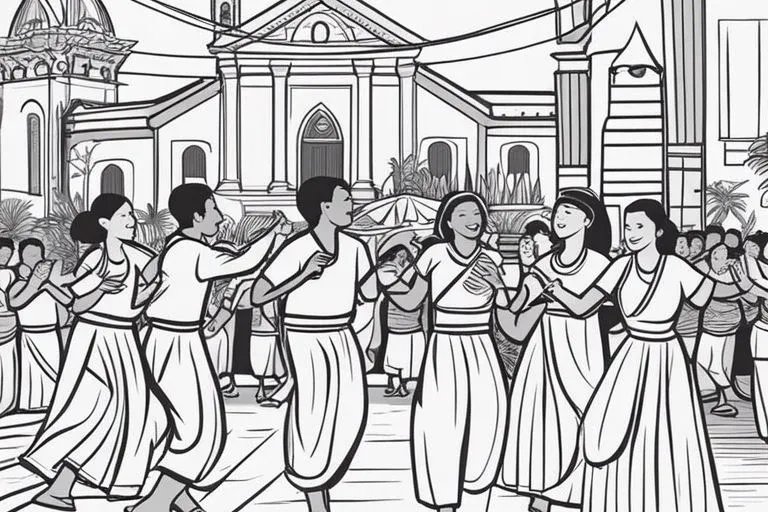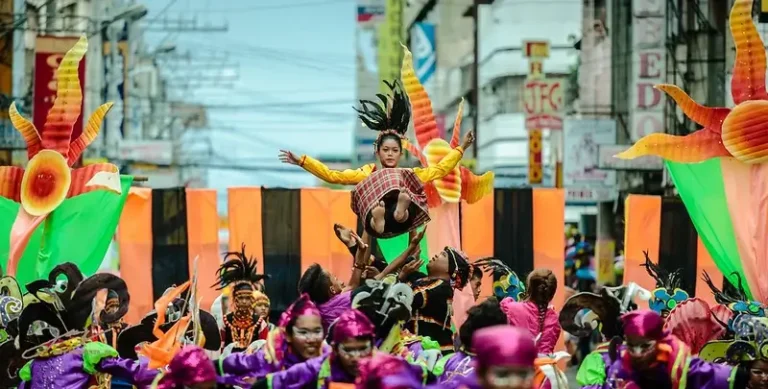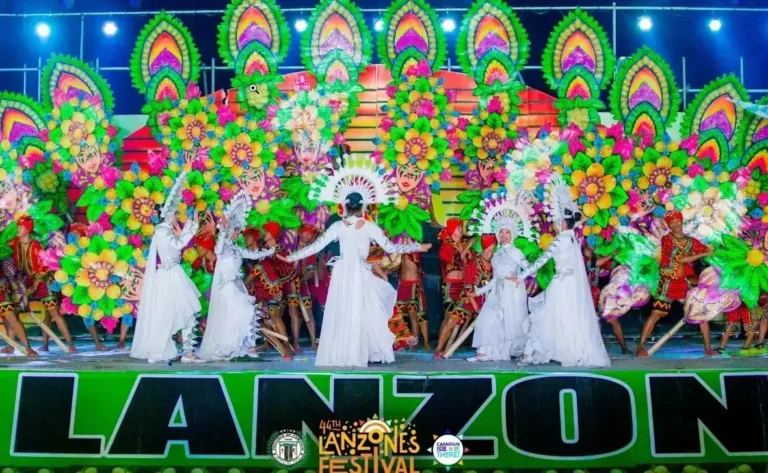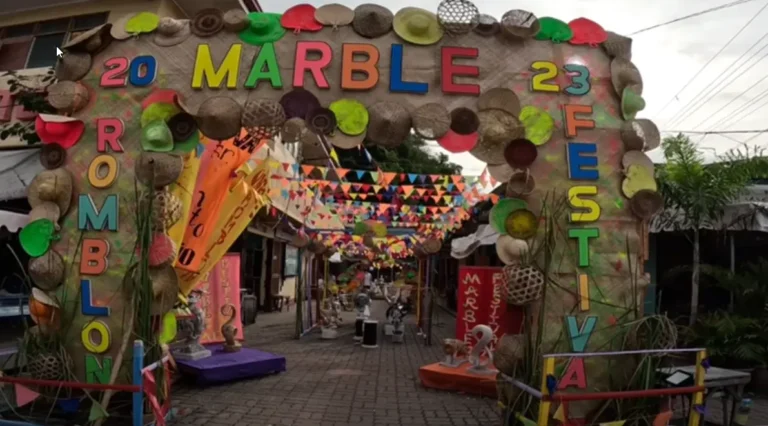Halad Festival Philippines
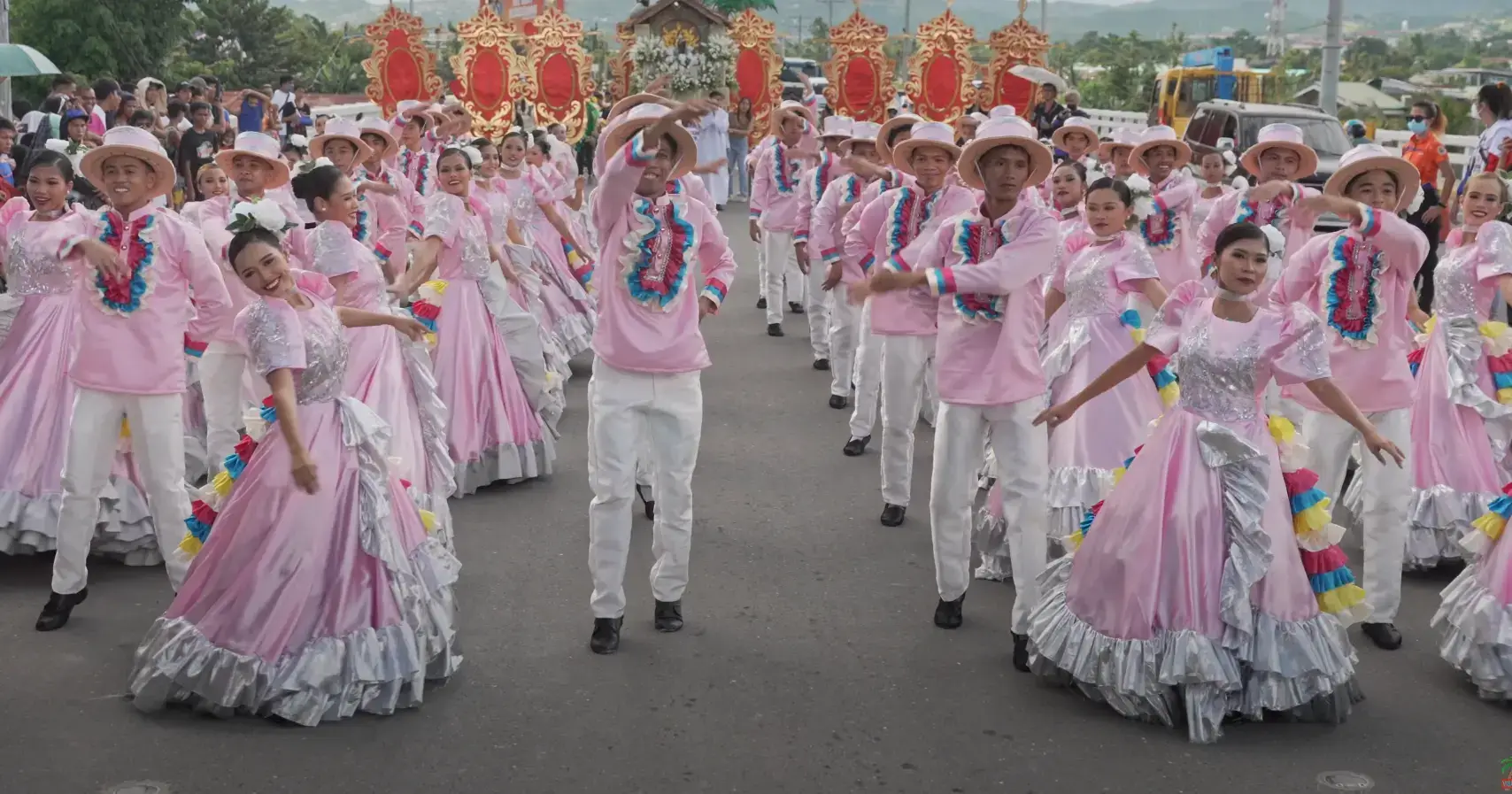
Welcome to the vibrant and culturally rich city of Talisay, Cebu in the Philippines, where every October 15th, the Halad Inasal Festival takes center stage. This annual celebration is a captivating fusion of food, culture, and religious devotion, drawing locals and tourists alike.
The festival pays homage to the city’s renowned specialty, Lechon (roasted pig), while coinciding with the patronal feast of St. Therese of Avila.
Join us as we discuss the history, significance, and festivities of this remarkable event that showcases the best of Talisay City’s culinary heritage and religious traditions.
Facts About The Halad Festival Philippines
| Facts | Explanation |
|---|---|
| Name of the festival | Halad Festival |
| Type of festival | Cultural, Religious |
| City of origin | Mandaue City |
| Festival Etymology | “Halad” means “offering” or “tribute” in the local language |
| First celebrated | June 1, 1991 |
| Founder | Mayor Thadeo Ouano |
| Brief history of the festival | The Halad Festival is an annual celebration in Mandaue City, Philippines, that pays tribute to the city’s patron saint, St. Joseph. It started in 1991 under the leadership of Mayor Thadeo Ouano. The festival aims to showcase Mandaue City’s rich cultural heritage and promote unity among its residents through various cultural activities, street dances, and grand parades. |
| Brief history of the city | Mandaue City, located in Cebu province, is known as the “Furniture Capital of the Philippines” due to its thriving furniture industry. It has a vibrant history dating back to pre-colonial times when it was a trading hub. Today, it is a bustling city with a mix of urban development and preserved historical sites. |
| Ethnic information | Predominantly Cebuano |
| Location of the city in the country | Mandaue City is located in the central part of the Philippines, specifically in the province of Cebu. |
| How to reach the city | By air: Fly to Mactan-Cebu International Airport and take a taxi or private vehicle to Mandaue City. By sea: Take a ferry or boat to Cebu City’s ports and travel by land to Mandaue City. |
| Nearby and surrounding cities/towns | – Cebu City – 7 km – Lapu-Lapu City – 9 km – Consolacion – 7 km – Talisay City – 12 km – Liloan – 15 km |
| Google map link to the city location | Mandaue City Map |
| Festival main events and activities | – Street dances showcasing local culture and traditions – Grand parades with colorful floats and costumes – Cultural shows featuring music and dance performances – Food festivals with local delicacies – Trade fairs and exhibits showcasing products from Mandaue City’s industries |
| Other famous tourist attractions | – Magellan’s Cross – A historical Christian cross brought by Ferdinand Magellan – Basilica Minore del Santo Niño – A centuries-old church housing the Santo Niño de Cebu image – Cebu Taoist Temple – A beautiful temple built by the city’s Chinese community – Fort San Pedro – A Spanish fort dating back to the 16th century |
| Famous food dishes of the city | – Lechon (Roast Pig) – A popular Filipino dish with crispy skin and tender meat – Danggit – A dried fish delicacy – Chicharon Bulaklak – Deep-fried pork intestines – Puso – Rice wrapped in coconut leaves |
| Landmarks in the city | – Marcelo Fernan Bridge – A cable-stayed bridge connecting Mandaue City to Lapu-Lapu City – J Centre Mall – A modern shopping mall with various retail outlets and entertainment facilities – Mandaue-Mactan Bridge – A bridge connecting Mandaue City to Mactan Island |
| Related festivals in the same region | – Sinulog Festival (Cebu City) – Kadaugan sa Mactan Festival (Lapu-Lapu City) – Pista sa Sugbo (Province-wide celebration) |
History of the Festival and City
Held annually in the charming city of Talisay in Cebu, the Halad Festival is a profound expression of gratitude (‘Halad’ translates to ‘offering’) to Sta. Teresa de Avila, the city’s patron saint.
The festival showcases the deep-rooted culture and rich history of Talisay, a city with origins that can be traced back to pre-colonial times when it was a humble coastal settlement. As centuries passed, Talisay evolved and flourished, becoming a vital trade and religious hub under Spanish colonization.
The city’s vibrant growth and development over time have contributed to its reputation as a dynamic and thriving community.
Today, Talisay stands as a testament to its remarkable journey, embracing its past while looking toward a bright and promising future.
Cultural Significance and Meaning
The Halad Festival holds a profound cultural significance that goes beyond being a mere spectacle. It stands as a vibrant celebration, serving as a living testament to the enduring faith and rich heritage of Talisay. This annual festival is a heartfelt devotion to the patron saint, where every dance step is infused with reverence and every song resonates with gratitude.
As the rhythmic beats of the drums fill the air, the lively street parades captivate the senses, and the heartfelt performances unfold, the festival becomes a grand display of offerings and thanks. These joyous expressions not only showcase the city’s deep spiritual roots but also serve as a reminder of the unwavering spirit and unity that binds the community together.
The Halad Festival is a celebration of tradition, faith, and gratitude, embracing the cultural tapestry of Talisay and embodying the essence of its people. It is an event where history and heritage intertwine, leaving a lasting impression that echoes through generations to come.
Ethnic Information of the City and Region
Talisay, like the rest of Cebu, is predominantly Cebuano, with a vibrant mix of cultures reflected in its traditions. The Halad Festival, deeply ingrained in Cebuano culture, is a grand celebration that showcases the rich tapestry of ethnic diversity found in the city.
During the festival, people from different cultural backgrounds come together to share their unique customs and art forms, creating a beautiful mosaic of Filipino unity.
Festival Etymology
The term ‘Halad’ stems from the Cebuano language, signifying ‘offering’ or ‘tribute’. It encapsulates the essence of the festival, which is a vibrant celebration that pays homage to the city’s patron saint.
During this grand event, the streets come alive with a multitude of dancers, musicians, and enthusiastic participants, all coming together to create an atmosphere of joy and unity.
The festival is a beautiful showcase of the rich cultural heritage and deep-rooted traditions of the community, making it a truly spectacular and memorable experience for all who attend.
Location and How to Reach the City
Nestled on the picturesque eastern shores of Cebu province, Talisay offers a tranquil escape for visitors. Conveniently accessible, this charming town is located just 12 km from Cebu City, the bustling capital of the province.
Sure! Here’s a table on how to reach Talisay, Cebu:
| Mode of Transportation | Option 1 | Option 2 |
|---|---|---|
| By Air | Fly to Mactan-Cebu International Airport | |
| By Sea | Take a ferry from Manila to Cebu City | |
| By Land | From Cebu City, take a taxi or ride a bus | From Cebu City, take a taxi or ride a jeepney |
Please note that these are just general options for reaching Talisay, Cebu. The availability and schedules may vary, so it’s recommended to check with the respective transportation providers for the most up-to-date information.
Travelers can easily reach Talisay within an hour by flying into the nearby Mactan-Cebu International Airport and taking a scenic taxi or bus ride through the stunning landscapes of the region.
Main Events and Activities
The Halad Festival is a vibrant burst of joyous activities, enchanting the senses and captivating the heart. Amidst the jubilant atmosphere, the streets come alive with exuberant street dancing and exhilarating ‘ritual showdowns’ that showcase the rich cultural heritage of the Philippines.
Performers, adorned in intricately designed costumes, gracefully move to the enchanting rhythm of traditional Filipino music, their every step weaving together a mesmerizing tapestry of faith, abundance, and the unbreakable bond of community spirit.
As the festivities unfold, each performance becomes a captivating narrative, telling tales of bountiful harvests, deep-rooted faith, and the enduring unity that binds the people together.
Popular Food Dishes of the City
Talisay’s culinary scene is a delightful gastronomic adventure that will tantalize your taste buds. Don’t miss out on the mouthwatering ‘Lechon de Talisay,’ a local version of the famous roasted pig, expertly cooked to perfection and bursting with flavor.
For dessert, indulge in the delectable ‘Bingka,’ a sweet coconut cake that will transport you to tropical bliss with every bite.
Experiencing the vibrant Halad Festival is incomplete without savoring these local delights, as they are an integral part of the rich cultural heritage of Talisay.
Sure! Here is a detailed table of popular food dishes in Talisay, Cebu:
| Dish Name | Description |
|---|---|
| Lechon Cebu | A whole roasted pig with crispy skin, tender meat, and flavorful seasonings. |
| Batchoy | A noodle soup dish made with pork offal, pork meat, and topped with crushed pork cracklings. |
| Inasal | Grilled chicken marinated in a mixture of vinegar, calamansi juice, garlic, and other spices. |
| Puso | Rice wrapped in coconut leaves and shaped like a heart. It is commonly served with grilled dishes. |
| Sinuglaw | Crispy pork rinds are popularly sold in the town of Carcar, near Talisay. |
| Budbud and Sikwate | Sticky rice cooked in coconut milk and served with hot chocolate. |
| Linarang | A sour soup dish made with fish, shrimp, or shellfish cooked in a tamarind-based broth. |
| Utan Bisaya | A vegetable soup made with various local vegetables and flavored with shrimp paste or fish sauce. |
| Ngohiong | Deep-fried spring rolls filled with ground pork, shrimp, and spices. |
| Carcar Chicharon | Crispy pork rinds that are popularly sold in the town of Carcar, near Talisay. |
Please note that this is just a selection of popular food dishes in Talisay, Cebu. There are many more delicious dishes to explore in the city!
Tips for Attending the Festival
To make the most of your visit, it’s highly recommended to plan as the city tends to get quite crowded during the festival. With the tropical weather in mind, make sure to dress comfortably and consider bringing along some sunscreen to protect yourself from the sun’s rays.
Staying hydrated is also key, so don’t forget to carry a water bottle with you. Last but certainly not least, be sure to fully immerse yourself in the lively festivities that await you, embracing the vibrant atmosphere and experiencing all the joy and excitement that the festival has to offer!
Famous Tourist Spots in the City
While in Talisay, a charming city in the Philippines, you can embark on an exciting adventure by exploring the captivating Crocolandia Park. Immerse yourself in wildlife encounters as you discover the diverse species that inhabit this sanctuary.
Alternatively, you can visit the magnificent Sta. Teresa de Avila Church, is a symbol of the city’s deep-rooted faith and rich history. Marvel at the architectural beauty and immerse yourself in the serene ambiance as you soak in the spiritual atmosphere.
Indulge in these remarkable experiences and create memories that will last a lifetime in Talisay, a destination that offers a perfect blend of nature, culture, and spirituality.
Related Festivals in the Same Region
The Visayas region, located in the central part of the Philippines, is widely known as a festival hotspot, offering a vibrant and diverse array of cultural celebrations.
If your schedule permits, consider attending the Sinulog Festival in Cebu City, a grand extravaganza that honors the Santo Niño, or the Ati-Atihan Festival in Kalibo, Aklan, a captivating event that pays homage to the indigenous Ati people.
Immerse yourself in the lively street parades, colorful costumes, rhythmic music, and traditional dances, and indulge in the mouthwatering local delicacies that these festivals have to offer.
These unique cultural experiences are bound to leave you with unforgettable memories and a deeper appreciation for the rich heritage of the Philippines.
Final Thoughts
The Halad Festival is a mirror reflecting Filipino culture in its most vibrant form. It’s a celebration that transcends boundaries, inviting everyone to partake in a spectacular blend of faith, heritage, and unity.
As the rhythmic beats echo long after the festival concludes, one can’t help but carry a piece of Halad’s spirit – a testament to the Philippines’ rich cultural tapestry.

